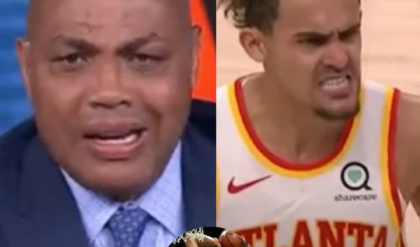Wembanyama is shooting better on pull-ups than catch-and-shoot threes. How can he use one to make the other better?
/cdn.vox-cdn.com/uploads/chorus_image/image/73235420/usa_today_22494339.0.jpg)
With few exceptions, the modern NBA has turned long-distance shooting into a prerequisite for being a star, even for big men. V
ictor Wembanyama had to deal with that reality as a prospect, as the main question about his potential in the NBA was his jumper since he only averaged 29 percent from three in Europe.
As an NBA rookie, Wembanyama is averaging slightly better than 32.1 percent, a relatively small improvement over his efficiency overseas, but it’s clear that he’s on the right track.
Despite not shooting particularly well, Wembanyama’s mechanics are fluid, and he has taken plenty of threes, attempting over five per game.
There are plenty of reasons for optimism in his potential as a shooter. Now the biggest concern is whether he will be a versatile one.
As fluid as it has looked, Wembaynama’s shot is still not in its final form.
A look at his shooting data sheds light on how it might need to be tweaked for his efficiency to climb. Currently, Wembanayama is shooting 26.4 percent on catch-and-shoot threes, attempting about three per game.
But on pull-up threes he is averaging 39.8 percent, taking two per game.
These get even better when isolating them to pull-ups after just one dribble, taking it to 41 percent.
This flies in the face of the norm for most NBA shooters, who perform better on spot-ups, not pull-ups.
It’s an interesting and rare phenomenon that’s made particularly notable because of the vast difference (over 13%) between the two shot types.
The adrenaline-spiking final moments of the ‘06 Maryland-Duke Championship need a deep rewind
It’s April 4th, 2006. We’re in Boston for the 2006 NCAA final between a school with a powerhouse reputation that you might be surprised to hear has never won a championship, and a school you might not be surprised to hear has never won a championship.
The first one’s Duke, and the latter is Maryland in case I’m being too opaque. Terps have the ball, down three, with 12 seconds left.
To understand just how surprising it is that Maryland is this close to winning the title, and how annoying that must be for Duke, we gotta rewind.
Getting into a little film, and supported by the one-dribble percentage, Wembanyama seems to be a rhythm shooter who requires a step or two to be comfortable.
Since he can’t create his own rhythm in that way on catch-and-shoots, his form and his efficiency change.
One theory for why he might have issues off the catch is his size.
When spotting up from three, a player wants to get the ball off quickly.
Because of Wembanyama’s length, he naturally takes a little longer which may lead to him feeling rushed and therefore not being completely comfortable after the ball swings to him.
Most of his outside shots are open, but even the threat of the closeout might disrupt Wemby’s rhythm.
It’s also possible that his dip, how he brings the ball down before shooting, is more natural after a dribble, as can be seen here.
On catch-and-release sometimes it can look like he is pushing the ball instead of shooting, especially if he’s facing a touch close-out. The dip doesn’t seem natural.
Regardless, all it takes is a quick look at his nearly 80 percent shooting from the free-throw line to realize that something about his form is working.
Ironically though, he doesn’t dribble in his free throw routine but he does have a rhythm with the ball. He gives the ball a slight toss, catches it with his left, and then shifts it back to his right hand to shoot.
So how can Wembanyama find that rhythm from his pull-ups and free throws and apply it everywhere?
It’s a tough question to answer since neither all his makes nor all his misses look the same. There are a lot of tweaks that he could try, though.
In attempts to find this rhythm, many spot-up shooters stay ready and halfway into their shooting position before the pass is even thrown, thus allowing them to explode into their shot from the catch.
Some even take two ghost steps on the catch to mimic the rhythm they would normally have on a pull-up.
Another method is to incorporate a very slight hop upon catching the ball to go into a bigger jump for the shot.
Wembanyama can be seen doing a little bit of all of these but with this year being so experimental for him and the Spurs it’s not certain what works best for him yet.
Fortunately, this season has brought a whole mess of data for Wemby and his coaches to comb through in hopes of finding what works best.
Wembanyama has time and time again made unprecedented strides both literally and figuratively with his play over his rookie season.
For a player like him, experience and repetition amalgamate quickly.
It’s scary to think how good he will be next year with even more information for his brain to turn into fresh new basketball intelligence.





